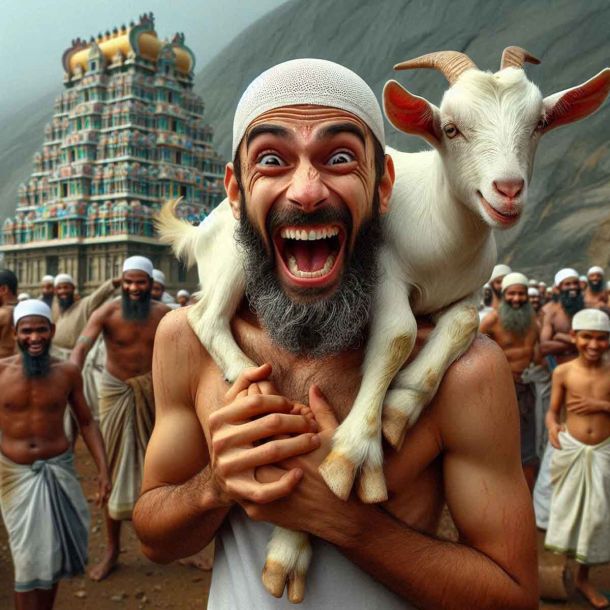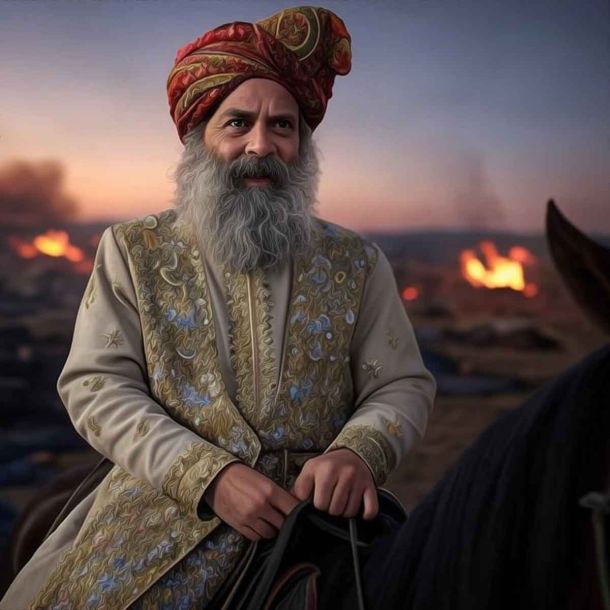MORE COVERAGE
Twitter Coverage
Satyaagrah
Written on
Satyaagrah
Written on
Satyaagrah
Written on
Satyaagrah
Written on
Satyaagrah
Written on
JOIN SATYAAGRAH SOCIAL MEDIA
Slave past of Kafirs of India and toxic Hindu-Muslim History - Landscapes of misery
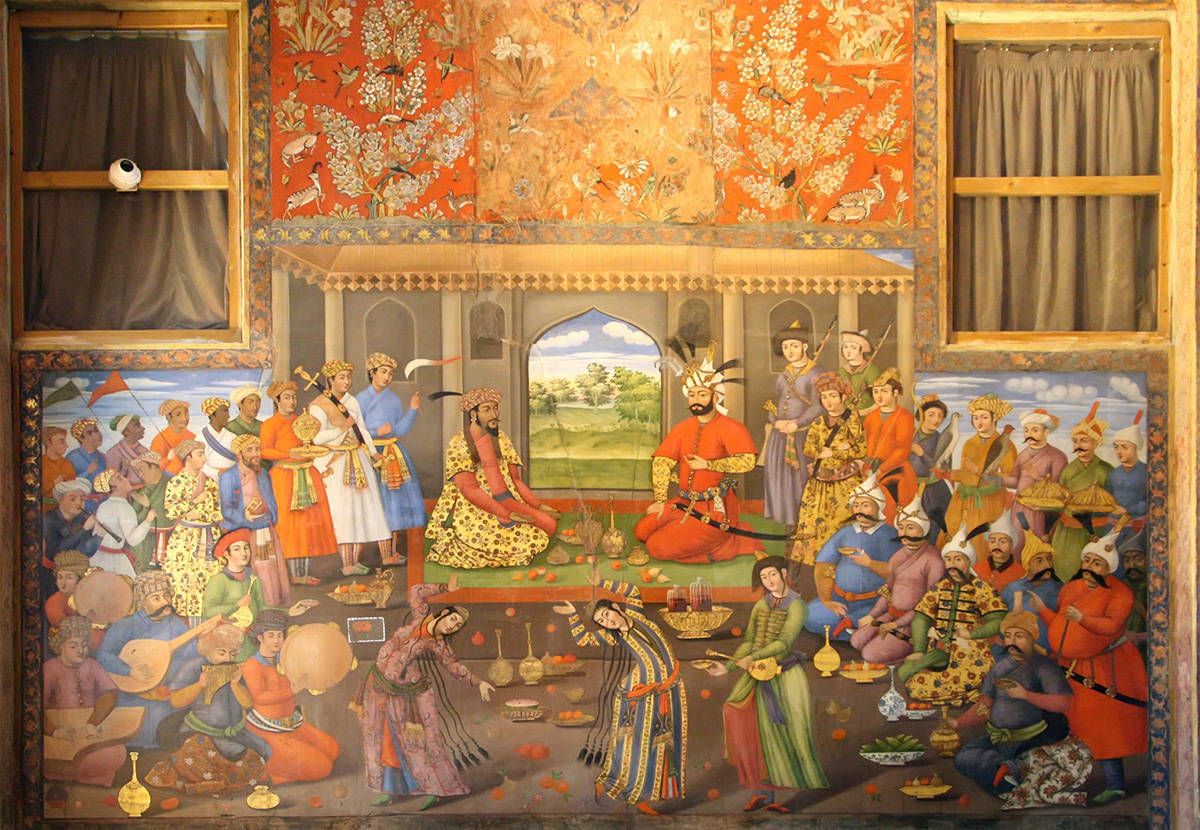
‘The basis of the obligation of jihad is the universality of the Muslim revelation. God’s words and God’s message is for all mankind; it is the duty of those who have accepted them to strive (jihada) unceasingly to convert or at least subjugate those who have not. This obligation is without limit of time or space. It must continue until the whole world has either accepted the Islamic faith or submitted to the power of the Islamic state.’ [Bernard Lewis, The Political Language of Islam]
Allah’s command of Jihad—embraced by a lone person, Prophet Muhammad—has indeed achieved stunning success in the course of the last fourteen centuries. Prophet Muhammad and his successors converted tens of millions of infidels to Islam at the pain of death, through enslavement as well as by coercing them to embrace Islam by subjecting to severe economic exploitation. Muslims now constitute a staggering 1.4 billion, greater than 20 percent, of the world population. It has been made abundantly clear that Muslims have practised the institution of slavery— slave-trade and sex-slavery included—on a grand scale well into the twentieth century. And of course, Islamic imperialism, established in the Middle East, Central Asia, North Africa, Bangladesh and Pakistan amongst other places since the early times of Islam, would remain under perpetual Islamic rule.
Doctrine of Jihad or holy war—unequivocally calls for forced conversion and enslavement of non-Muslims and for the establishment of an imperial Islamic rule globally.
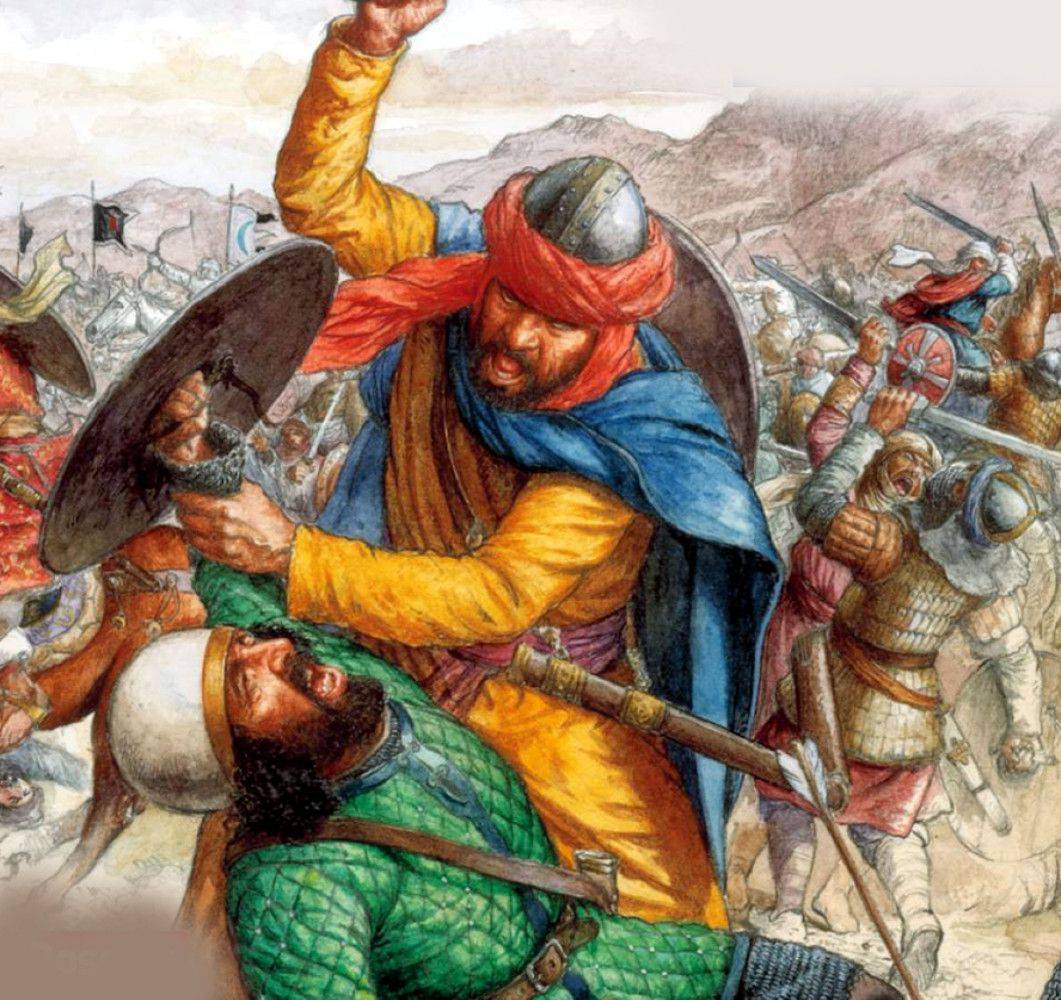 |
Jihad is on a spectacular march once again. It will only gain in strength over coming decades. Jihad has been launched in two forms—violent and soft—with the same end goal: establishing the laws of Allah, the Sharia, with dhimmitude, slavery, forced conversion embedded in it. The violent Jihad could be manageable, but the soft form, particularly through limitless procreation to flood the population in the infidel-dominated countries, will be the hardest to beat. India, Russia and Europe have become the real playgrounds for the Jihadis, whether of violent or soft kinds.
Howsoever ludicrous and unjust it may appear to rational minds, Jihad, in one form or another, will play a vigorous role on the world-stage in coming decades.
The radical Islamic movements have been gaining fast ascendancy in the Muslim world, while the Sharia laws creeping into the legal system bit by bit even in the West. It remains to be seen whether or not the central professions of Jihad—forced conversion, imperialism and slavery along with economic exploitations and social disabilities of non-Muslims—return to the world-stage with its medieval glories.
In modern history writing in India, there is extensive whitewashing of the atrocities that took place during the Muslim invasions and the subsequent Islamic rule. Such distortions of the true picture of Islamic history compound Muslims’ ignorance about Islamic atrocities in medieval India and create an erroneous perception amongst them about the extensive slavery practised by Muslim rulers. Slavery was regrettably a prominent institution throughout the history of Islamic domination everywhere. It also had unique features, namely largescale concubinage, eunuchs, and ghilman.
Quranic sanction of slavery
‘Allah sets forth (another) Parable of two men: one of them dumb, with no power of any sort; a wearisome burden is he to his master; whichever way he directs him, he brings no good: is such a man equal with one who commands Justice, and is on a Straight Way?’ [Allah, Quran 16:76]
‘(Allah) brought those of the People of the Scripture… and cast panic into their hearts. Some (adult males) ye slew, and ye made captive some (women and children).’ [Allah, Quran 33:26–27]
It is written in the Quran that all Nations who should not have acknowledged their (Muslims’) authority were sinners; that it was their right and duty to make war upon whoever they could find and to make slaves of all they could take as prisoners; and that every Mussulman who should be slain in battle was sure to go to Paradise. [Tripoli’s London ambassador Abd al-Rahman to Thomas Jefferson & John Adams (1786) on by what right the Barbary States enslaved American seamen.]
Allah does not only sanction the institution of slavery, He also gave divine blessing to masters (Muslim men only can own slaves) to have sex with the female slaves:
And those who guard their private parts, Except in the case of their wives or those whom their right hands possess—for these surely are not to be blamed [Quran 70:29–30]
And who guard their private parts, Except before their mates or those whom their right hands possess, for they surely are not blameable [Quran 23:5–6]
Therefore, if there are women amongst the captives or slaves, Muslims are divinely sanctioned to have sex with them as they do with their wives. This verdict of Allah founded the institution of sex-slavery or slave-concubinage in Islam, which was widespread in the pre-colonial Muslim world and continued well into the mid-twentieth century. As far as legal marriage is concerned, there is a limitation of four wives for a man at one time [Quran 4:3], but no such limitation on the number of sex-slaves.
The prophetic model of slavery
 The Slave Market by Otto Pliny |
Allah did not rest with repeatedly reminding Muslims to engage in slavery, but also took the initiative to guide Prophet Muhammad on how to enslave the infidels, such as in the following verse:
And He (Allah) brought those of the People of the Scripture (i.e., Banu Qurayza) who supported them (i.e., the Quraysh) down from their strongholds, and cast panic into their hearts. Some (adult males) ye slew, and ye made captive some (women and children)… [Quran 33:26–27]
In this verse, Allah charged the Banu Qurayza Jews with supporting the Quraysh of Mecca ‘from their strongholds’ against Muslims in the battle of the Trench (627). Based on this unsubstantiated accusation, Allah commanded that some of the Jews, the adult males, were to be slain, and the rest, the women and children, enslaved. The Prophet duly complied with this divine command. He distributed the enslaved women and children among his disciples, himself acquiring one-fifth of them. The young and pretty ones amongst the female captives were made sex-slaves; the Prophet himself took beautiful Rayhana, whose husband and family members had been slain in the massacre. He took her to bed on the same night.
Since emulating Muhammad in action and deed is central to living a good Muslim life in Islamic thought, Muslims duly embraced his model of slavery (comprising enslavement, slave-trade and slave-concubinage) and perpetuated it during the later centuries of Islamic domination. Muhammad’s examples of dealing with Banu Qurayza or Khaybar became the standard template for capturing slaves. This led to a massive rise in enslavement, sex-slavery and slave-trade in medieval Islamdom.
Slavery in the ancient world
Slavery was not an Islamic invention, nor did Islam have a monopoly in it. Likely originated in the age of savagery, slavery had been a prominent feature of all major civilizations throughout recorded history. Slavery existed in Babylonia and Mesopotamia, and was prevalent in ancient Egypt, Greece and Rome before the advent of Christianity. Slavery is approved in Christian scriptures and was practiced in the medieval Christendom.
Ancient India: There are few mentions of slavery in ancient India, another great civilization since early antiquity. Megasthenes (c. 350–290 BCE), the famous Greek traveler, who was familiar with slavery in Greece and other countries he had visited, failed to notice the existence of slavery in India. He wrote, ‘‘All Indians are free. None of them is a slave… They even do not reduce foreigners to slavery. There is thus no question of their reducing their own countrymen to slavery.’’ Similarly, Muslim chroniclers, who left abundant records of large-scale Islamic slavery in India, never mention any incidence of slavery in the pre-Islamic Hindu society.
Enslavement by Muslims in India
Muslim invaders and rulers engaged in large-scale enslavement of the infidels wherever they went: Europe, Africa and Asia.
By Muhammad bin Qasim: Islam’s assault on Indian frontiers started during Caliph Omar with the attack and pillage of Thana in 636, just four years after Prophet Muhammad’s death. Eight more such plundering expeditions followed under succeeding caliphs: Othman, Ali and Muwabiya. These early assaults by Muslim invaders sometimes yielded booty and slaves besides slaughter and pillage, but failed to gain a foothold for Islam in India.
With Caliph al-Walid’s blessings, Hajjaj bin Yusuf sent expeditions to Sindh. In the attack of Rawar, records Chachnama, ‘When the number of prisoners was calculated, it was found to amount to thirty thousand persons, amongst whom were the daughters of the chiefs, and one of them was Rai Dahir’s sister’s daughter.’ One-fifth of the prisoners and the spoils were sent to Hajjaj. As records Chachnama, when Brahmanabad fell to Muslims, in which 8,000 to 26,000 men were slain, ‘One-fifth of all the prisoners were chosen and set aside; they were counted as amounting to twenty thousand in number, and the rest were given to the soldiers.’ This means, about 100,000 women and children were enslaved in this assault.
One consignment of caliph’s share of the booty included 30,000 women and children and slain Dahir’s head. Among the captives were a few girls of Sindh nobility.
By Ghaznivid invaders: Nearly three centuries after Qasim’s exploits, Sultan Mahmud launched seventeen devastating incursions into Northern India (1000–27), involving mass slaughter, plunder, destruction of temples and enslavement in large numbers. In his attack of King Jaipal in 1001–02, records al-Utbi: ‘God bestowed upon his friends such amount of booty as was beyond all bounds and all calculation, including five hundred thousand slaves, men and women.’ Among the captives were King Jaipal and his children and grandchildren, and nephews, the chief men of his tribe and his relatives. He drove them away to Ghazni for selling.
In the attack of Ninduna (Punjab) in 1014, writes al-Utbi, ‘slaves were so plentiful that they became very cheap; men of respectability in their native land were degraded by becoming slaves of common shop-keepers. From the next year’s assault in Thanesar (Haryana), the Muslim army ‘brought 200,000 captives so that the capital appeared like an Indian city; every soldier of the army had several slaves and slave girls,’ testifies Ferishtah.
Caliph’s one-fifth share of the booty was kept aside, which, records Tarikh-i-Alfi, included 150,000 slaves. This means that a minimum of 750,000 slaves were captured by Sultan Mahmud.
By Ghaurivid invaders: Sultan Muhammad Ghauri, an Afghan, launched the third wave of Islamic invasion of India in the late twelfth century establishing Muslim rule in Delhi (1206). In the attack of Benaras in 1194, ‘The slaughter of the Hindus was immense; none were spared except women and children and the carnage of the men went on until the earth was weary,’ records Ibn Asir.
His illustrious general Qutbuddin Aibak attacked Raja Bhim of Gujarat in 1195 capturing 20,000 slaves; in his attack of Kalinjar in 1202, records Hasan Nizami, ‘Fifty thousand men came under the collar of slavery, and the plain became black as pitch with Hindus.
In 1206, Muhammad Ghauri marched to exterminate the recalcitrant Khokhar rebels who had established their sway in regions of Multan. The slaughter of the rebels was so thorough that none survived to light a fire. ‘Much spoils in slaves and weapons, beyond all enumerations, fell into the possession of the victors,’ adds Nizami. In summarizing the
In 1206, Muhammad Ghauri marched to exterminate the recalcitrant Khokhar rebels who had established their sway in regions of Multan. The slaughter of the rebels was so thorough that none survived to light a fire. ‘Much spoils in slaves and weapons, beyond all enumerations, fell into the possession of the victors,’ adds Nizami. In summarizing the feat of slave-taking of Sultan Ghauri and Aibak, says Fakhr-i-Mudabbir, ‘even poor (Muslim) householders became owner of numerous slaves.’ According to Ferishtah, ‘three to four hundred thousand Khokhars were converted to Islam’ by Muhammad Ghauri. These conversions came mostly through enslavement.
Having become the first sultan of India in 1206, Aibak conquered Hansi, Meerut, Delhi, Ranthambor and Kol. During his reign (1206–10), Aibak undertook many expeditions capturing much of the areas from Delhi to Gujarat, from Lakhnauti to Lahore.
Simultaneously, Bakhtiyar Khilji unleashed extensive conquest, involving massacre and enslavement, in Bengal and Bihar in Eastern India. About Bakhtiyar, Ibn Asir said, bold and enterprising, he made incursions into Munghir and Bihar, brought away much plunder and obtained plenty of horses, arms and men (i.e., slaves). In Bakhtiyar’s attack of Lakhmansena of Bengal in 1205, records Ibn Asir, ‘his whole treasure, and all his wives, maid servants, attendants, and women fell into the hands of the invader.’
During Sultan Iltutmish to Balban (1210–1285): Next, Sultan Iltutmish in 1226 attacked Ranthambhor. Minhaj Siraj records that ‘much plunder fell into the hands of his followers;’ the plunder obviously included slaves.
In 1244, Sultan Nasiruddin Mahmud, commanded by Ulugh Khan Balban, attacked the Gukkar rebels of the Jud Mountain in Multan and carried away ‘several thousand Gukkars of all ages and of each sex,’ records Ferishtah. Ulugh Khan Balban attacked Karra in 1248; there, records Siraj, his ‘taking of captives and his capture of the dependents of the great Ranas (Hindu princes) cannot be counted.’ In attacking the Rana Dalaki wa Malaki, ‘He took prisoners the wives, sons, and dependents of that accursed one, and secured great booty.’
In the attack of Ranthambhor in 1253, Balban captured many slaves, while in the attack of Haryana in 1259, many women and children were enslaved. Balban led expeditions twice against Kampil, Patiali and Bhojpur enslaving large numbers of women and children each time. In Katehar, he captured women and children after a general massacre of the men above eight years of age, notes Ferishtah.
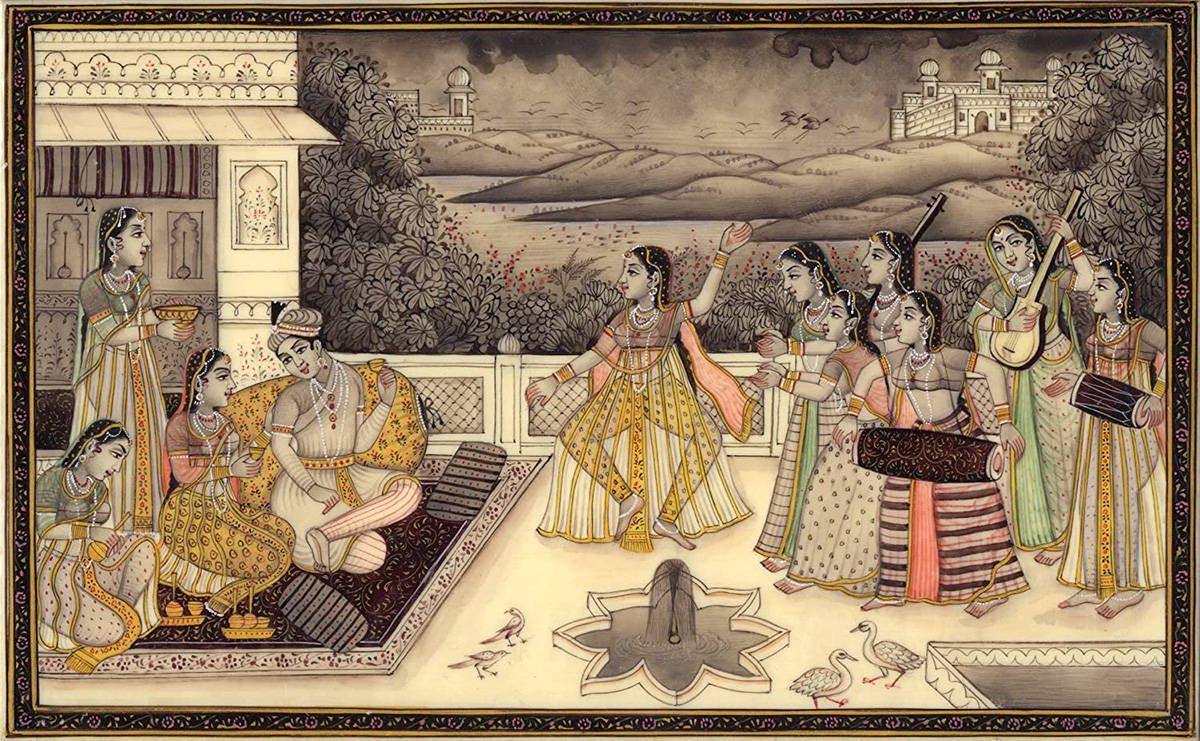 Courtesy Mughal miniature Artindia - Credit Altfocus |
In 1260, Balban attacked Ranthambhor, Mewat and Siwalik—proclaiming that those who brought a live captive would receive two silver tankahs and one tankah for the head of a slain infidel. Soon three to four hundred living persons and heads of the slain were brought to his presence, records Ferishtah.
Balban became the sultan in 1265 assuming the title of Ghiyasuddin Balban. As the commander of the previous sultan, Balban showed great military prowess, leading numerous expeditions against the infidels. After assuming power, his first job was, as noted already, to exterminate hundreds of thousands of recalcitrant Hindu rebels, the Muwattis etc. He ordered to ‘destroy the villages of the marauders, to slay the men, to make prisoners of the women and children.’
During Khilji dynasty: Under the Khilji (1290–1320) and Tughlaq (1320–1413) dynasties, the hold of the Muslim rule in India had been firmly established with the expanded army and territory. The sultan’s power was so overwhelming that ‘no one dared to make an outcry,’ noted Afif. Apart from campaigns to suppress many Hindu rebellions, many expeditions against infidel-held territories were undertaken with an ever-increasing zeal to bring them under the Muslim control.
Jalaluddin Khilji (r. 1290–96), the founder of Khilji dynasty, undertook ruthless campaigns to suppress Hindu revolts and to extend the boundary of the sultanate. He led expeditions to Katehar, Ranthambhor, Jhain, Malwa, and Gwalior. In the campaigns to Ranthambhor and Jhain, he sacked temples, plundered, and took captives making ‘‘a hell of paradise,’’ writes Amir Khasrau. From the Malwa campaign, large quantities of booty (which always included slaves) was brought to Delhi, adds Khasrau.
Next, Sultan Alauddin Khilji (r. 1296–1316) beat all earlier sultans in the capture of slaves. He sent a large expedition to Gujarat in 1299 sacking all major cities and towns: Naharwala, Asaval, Vanmanthali, Surat, Cambay and Somnath. According to the records of Muslim chroniclers Isami and Barani, he acquired great plunders and a large number of captives of both sexes. In the sack and plunder of Somnath alone, testifies Wassaf, the Muslim army ‘took captive a great number of handsome and elegant maidens, amounting to 20,000’ as well as ‘the children of both sexes.’ Ranthambhor was attacked in 1301 and Chittor in 1303. In the Chittor invasion, 30,000 people were massacred; and as a standard practice, their women and children were enslaved although some of the Rajput women had committed Jauhar. Large numbers of slaves were captured in the expeditions to Malwa, Sevana and Jalor between 1305 and 1311. Sultan Alauddin also captured slaves in his expedition to Rajasthan. During his reign, capturing slaves became like a child’s play as Amir Khasrau puts it, ‘the Turks whenever they please, can seize, buy or sell any Hindu.’ So stupendous was his slave-taking that he had ‘50,000 slave boys in his personal service’ and ‘70,000 slaves worked on his buildings,’ record Afif and Barani, respectively. Barani testifies that ‘fresh batches of captives were constantly arriving’ in the slave-markets of Delhi during Alauddin’s reign.’
During Tughlaq dynasty: In 1320, the Tughlaqs captured power. Muhammad Shah Tughlaq (r. 1325–51), the most learned amongst Muslim rulers of India, was the most powerful rulers of the Sultanate period (1206–1526). His notorious zeal for capturing slaves had even outstripped the feats of Alauddin Khilji.
Shihabuddin Ahmad Abbas wrote of his capture of slaves that ‘The Sultan never ceases to show the greatest zeal in making war upon the infidels… Everyday thousand of slaves are sold at a very low price, so great is the number of prisoners.’ During his notorious reign, he undertook numerous expeditions to put down revolts and to bring far-off regions of India under his sway, reaching deep into South India and Bengal.
Ibn Battutah testifies that the sultan used to accumulate slaves round the year and marry them off during the celebration of two major Islamic festivals, the Eid. This was obviously aimed at swelling the Muslim population in India.
In Amir Timur’s invasion: Amir Timur from Central Asia, waged Jihad against India (1398–99) to become a ghazi or a martyr, had accumulated over 100,000 captives when he reached Delhi. On the eve of his attack on Delhi, he killed them all. From his assault on Delhi onwards to his return to his capital, he has left a tragic trail of barbaric slaughter, destruction, pillage and enslavement, which he recorded in his memoir, Malfuzat-ITimuri.
On the way back to his capital in Central Asia, narrates Timur, he instructed his commanders ‘to take every fort and town and village’ they came across, and ‘to put all the infidels of the country to the sword. Combined with the captives taken at Delhi, he had driven away some 200 to 250 thousand slaves from India.
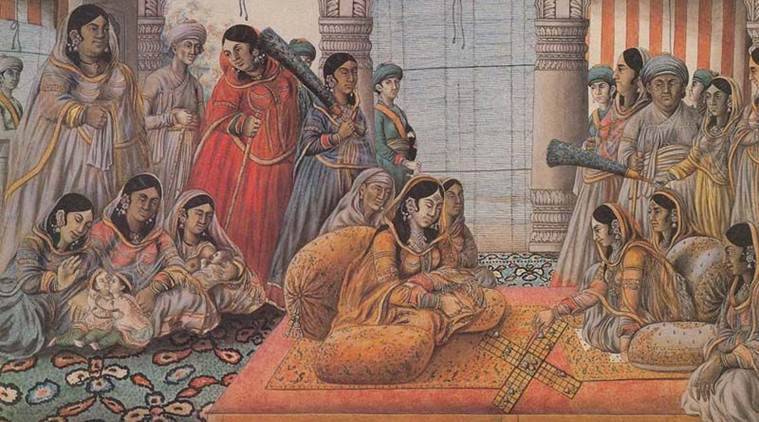 Mughal era history is that of slavery. Image source Representational Image |
During the Sayyid and Lodi dynasties (1400–1525): Following Timur’s departure after devastating the power in Delhi, the Tughlaqs, followed by the Sayyids, while consolidating their authority, made many expeditions. Many of these campaign yielded slaves in large numbers.
Following the Sayyids, the Lodi dynasty (1451–1526) re-established the authority of the sultanate and continued the practice of enslavement as usual.
During Mughal rule (1526…): By defeating Sikandar Lodi in 1526, Jahiruddin Shah Babur, proud descendent of Amir Timur, established the Mughal rule in India. In his autobiographical memoir Babur Nama, he describes his campaigns against the Hindus as Jihad, punctuated with verse and references from the Quran.
He made pillars with the heads of slain Hindus at Bajaur and Agra. Babur Nama also mentions that there were two major trade-marts between Hindustan and Khurasan, namely at Kabul and Qandahar, where caravans came from India carrying slaves (barda) and other commodities to sell at great profits.
Enslavement undoubtedly worsened during Akbar’s successors Jahangir (1605–27) and Shah Jahan (1628–58), under whose reigns, orthodoxy and Islamization was gradually revived. Emperor Jahangir in his memoir testifies of children in Bengal being castrated by helpless parents for giving ‘them to the governors as slaves in place of revenue.’ ‘This practice has become common,’ he adds. Said Khan Chaghtai, a noble of Jahangir, had ‘possessed 1,200 eunuch slaves alone,’ according to multiple testimonies. Jahangir had sent some 200,000 Indian captives to Iran for sale in 1619–20 alone.
Under next Emperor Shah Jahan, the condition of the Hindu peasants had become unbearable. During Aurangzeb’s reign (1658–1707), considered devastating to the Hindus, some 22,000 young boys were emasculated in 1659 alone in the city of Golkunda (Hyderabad). They were to be given to Muslim rulers and governors, or sold in slave-markets.
Nadir Shah of Iran invaded India in 1738–39. After committing great massacre and devastation, he captured a large number of slaves and drove them away along with a huge plunder. Ahmad Shah Abdali from Afghanistan invaded India thrice in the mid-eighteenth century. In his victory in the Third Battle of Panipat (1761), some 22,000 women and children of the slain Maratha soldiers were driven away as slaves.
Enslavement of the infidels in India went on as long as Muslims were ruling with authority. Even during the Partition (1947), Muslims kidnapped tens of thousands of Hindu and Sikh women and married them to Muslims: a form of age-old enslavement.
In November 1947, as already noted, Muslim Pathan raiders carried away Hindu and Sikh girls from Kashmir and sold in the markets of Jhelum (in Pakistan).’
These are accounts of enslavement by Muslim invaders and rulers mainly in Northern India. Enslavement was going on in earnest in far-off provinces across India, including Gujarat, Malwa, Jaunpur, Khandesh, Bengal and the Deccan, which were either under the control of Delhi or were independent Muslim sultanates. The records of enslavement in those regions were not always recorded systematically.
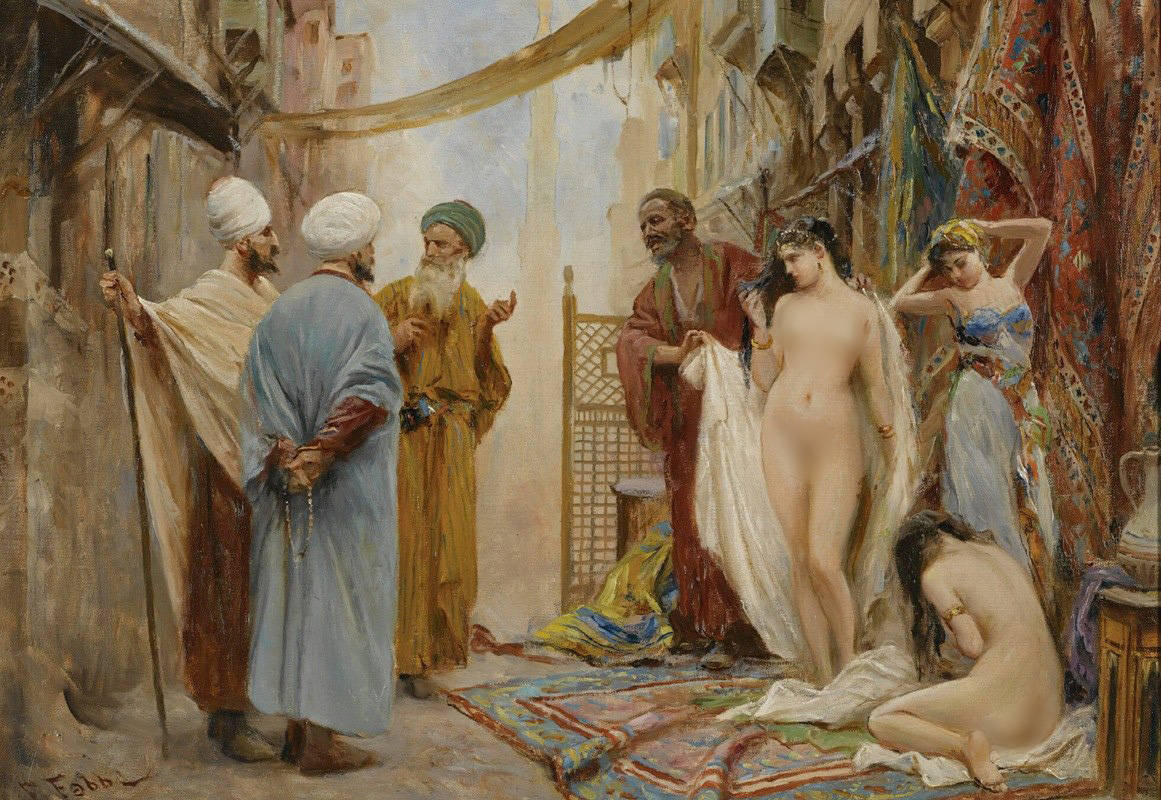 The Slave Market by Fabio Fabbi - Artvee |
Status of slaves
According to Ibn Warraq: Under Islam, slaves have no legal rights whatsoever, they are considered mere ‘things’—the property of their master, who may dispose them in any way he chooses—sale, gifts etc. Slaves cannot be guardians or testamentary executors, and what they earned belongs to their owner. A slave cannot give evidence in a court of law. Even conversion to Islam by a non-Muslim slave does not mean that he is automatically liberated. There is no obligation on the part of the owner to free him (and her).
After buying a slave, if the master finds any defect in him, he may beat and torture him without leaving visible wounds or scars. According to Fatwa-i-Alamgiri, the master may return the slave to the seller with full compensation as long as the beating and torture cause no permanent injuries. The Hedayah, a twelfth-century compendium of Hanafi laws, informs us that ‘amputation of a slave for theft was a common practice recognized by the law.’ Although Islam recommends good treatment of slaves, it is considered a natural death if a master kills his slave.
Concerning slaying of captives, the Hedayah says, ‘The Imam (ruler), with respect to captives, has it in his choice to slay them, because the Prophet put captives to death, and also because, slaying them terminates their wickedness.’ The nonthreatening women and children were generally enslaved, says the Hedayah, ‘because by enslaving them (for conversion to Islam), the wickedness is remedied; and at the same time, Muslims reap an advantage (by exploiting their labor and growing in number)…’
Suffering of slaves
The greatest pain and sufferings that slaves endured were the physical ones: hunger, thirst and disease. Physical pain and sufferings started immediately after the capture and continued until they arrived at the destination. The destinations were often situated thousands of miles away in foreign lands, where they were herded like common animals through difficult terrains. The captives used to be kept in chains until sold to their ultimate masters.
These captives, tied together in an uncomfortable and agonizing condition, were then driven away to the destination, hundreds to thousands of miles away. The majority of these slaves used to be feeble women and children, who had to travel bare-footed under such uncomfortable conditions through rugged terrain and jungles, sometimes for months.
These examples clearly point to the enormous physical strain, pain and sufferings endured by captives. Those who failed to keep up the pace, because of physical weakness and fatigue, received beating of the worst kind in order to keep them walking. There was little guarantee that such large numbers of captives got enough food and water along the way. Those
who fell ill or failed to carry on, they were abandoned half-alive to die on their own in the wilderness in agonizing pain or to be devoured by wild animals.
 Sex Slavery In Islamic India |
Sex-slavery & concubinage
In explaining the institution of slavery on the basis of Quranic verses 23:5–6, brilliant Islamic scholar Sayyid Abul Ala Maududi (d. 1979) wrote: Two categories of women have been excluded from the general command of guarding the private parts: (a) wives, (b) women who are legally in one’s possession, i.e. slave-girls. Thus the verse [Quran 23:5–6] clearly lays down the law that one is allowed to have sexual relation with one’s slave-girl as with one’s wife, the basis being possession and not marriage. If marriage had been the condition, the slave-girl also would have been included among the wives, and there was no need to mention them separately.The female slaves worked as domestic maids and in the backyards, while the young and pretty ones also had to provide sex to their masters. Thus, they not only provided menial services and pleasure to masters, but also helped swell the Muslim populace through procreation. Sex-slavery is not a negligible institution in Islam; Allah has shown utmost seriousness about its practice by repeatedly reminding Muslims about it in the Quran. Prophet Muhammad himself had taken at least three slave-girls as his concubines, namely Juwairiya of Banu Mustaliq [Bukhari 3:46:717], Rayhana of Banu Qurayza, and Maria, sent by the Egyptian governor to pacify Muhammad after receiving his threatening letter. From his large share of captives, he also distributed slave-girls amongst his companions for keeping as concubines. In one instance, he gave Ali (his son-in-law and the fourth caliph), Uthman b. Affan (his son-in-law and the third caliph) and Omar ibn Khattab (his father-in-law and the second caliph) a slave-girl each.
In agreement with the institution of sex-slavery in Islam and its abovementioned purpose, the Hedayah states that the object of owning female slaves is ‘cohabitation and generation of children.’ Accordingly, physical fitness, regular menstruation and absence of disabilities became major considerations in purchasing a female slave. According to Hedayah, odor in the mouth and armpit of a female slave is a defect—obviously because, she is meant for kissing, caressing and sleeping with; but the same does not matter in case of male slaves. The Hedayah further stipulates that when a female slave is shared by two masters, she becomes property of the one, who establishes sexual relationship with her with the consent of the other. Fatwa-i-Alamgiri stipulates that if a purchased female slave has too large breasts, or too loose or wide vagina, the purchaser has the right to return her for a refund—obviously because, the owner cannot get maximum pleasure from sex with such a woman, as she is intended for. Similarly, the purchaser can return a slave on the basis of whether she is a virgin.
These criteria for chosing or judging female slaves come from the time of Prophet Muhammad himself. He was in the habit of choosing the prettiest of captive women for himself. In Khaybar, he chose Safiyah, wife of Kinana, for himself, hearing that she was of exquisite beauty and worthy of himself only. He, thereby, deprived another Jihadi, who had obtained her initially. In another example, after the Prophet had distributed the captured women of the Hawazin tribe among his Jihadi comrades, a deputation from the tribe came to him seeking the release of their women. He agreed to release them for six camels apiece. His disciple Uyayna bin Hisn refused to release a woman of some nobility, fallen in his share, expecting a higher price. To this, Zubayr Abu Surad, another companion of Muhammad, convinced Uyayna to let her go, because, ‘her mouth was cold and her breast was flat; she could not concieve… and her milk was not rich.’ When Uyayna complained about this to Al-Aqra, another comrade of the Prophet, he persuaded Uyayna by saying: ‘By God, you did not take her as virgin in her prime nor even full-figured in her middle age!’
Using the female slaves for sex—a norm and a widespread practice throughout the history of Islam—is clearly sanctioned in the Quran, the Sunnah and the Sharia. It has, therefore, received unabashed and overt approval of Islamic jurists, imams and scholars well into the modern age. Apart from the lure of booty, the greed for capturing the women for using as sex-slaves became a significant motivating factor for Muslim Jihadis to take part in holy wars since Muhammad’s time. According to Islamic laws, the slayer becomes the owner of the victim’s wife, children and properties. Sir William Muir thought that the sanction of the sex-slavery in Islam acted ‘as an inducement to fight in the hope of capturing the females who would then be lawful concubines as ‘that their right hand possessed.’’
Islam puts no limit on the number of sex-slaves Muslim men can keep; ‘there is absolutely no limit to the number of slave girls with whom a Mohammedan may cohabit, and it is the consecration of this illimitable indulgence which so popularizes the Mohammedan religion amongst the uncivilized nations and so popularizes slavery in the Muslim religion,’ writes Thomas Hughes.
Akbar had 5,000 women in his harem, while Jahangir and Shah Jahan had 5,000 to 6,000 each. In the eighteenth century, Sultan Moulay Ismail had 4,000 concubines in his harem.
Dutchman Francisco Pelsaert, who visited India during Emperor Jahagir’s reign (1605-27), wrote of the sexual indulgence of Muslim rulers and noblemen in the harems that:
‘…each night the Amir visits a particular wife or mahal (quarter), receives a very warm welcome from his wife and from the slaves [girls], who dressed especially for the occasion… If it is the hot weather, they… rub his body with pounded sandalwood and rosewater. Fans are kept going steadily. Some of the slaves chafe the master’s hand and feet, some sit and sing, or play music and dance, or provide other recreation, the wife sitting near him all the time. Then if one of the pretty slave girl takes his fancy, he calls her and enjoys her, his wife not daring to show any signs of displeasure, but dissembling, though she will take it out on the slave girl later on.’ However, the wife could never get rid of such beautiful slave-girls from the harem, because, it was only in the power of the master to free her.
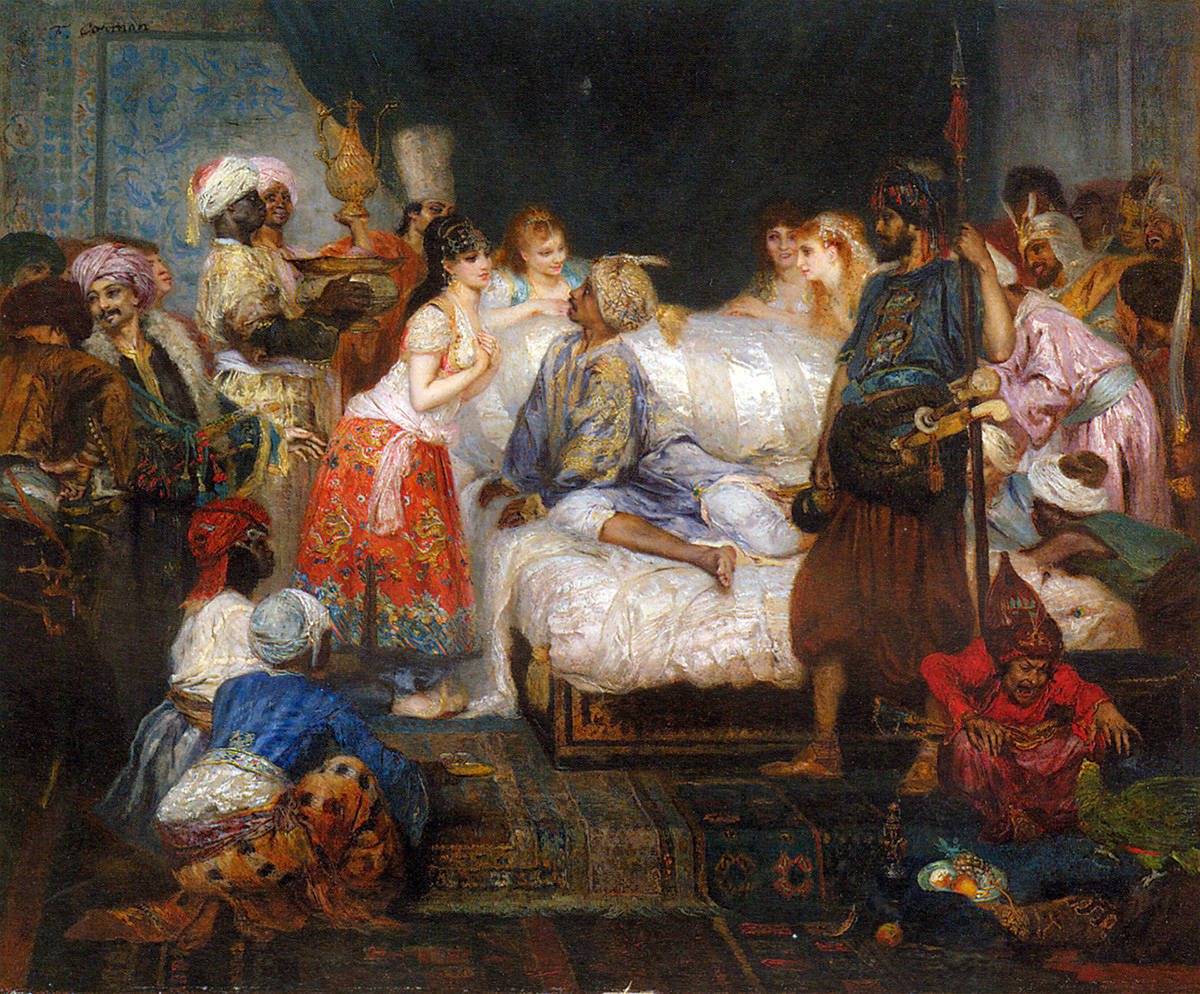 Eunuchs and Sunni Orthodoxy - Attitudes of the Chief Harem Eunuch to Sufism and Shi`ism |
Eunuchs and Ghilman
Another extremely cruel, dehumanizing and degrading aspect of Islamic slavery was the large-scale castration of male captives. It has received little attention of critics and historians.
The employment of eunuchs is clearly sanctioned by Allah, as the Quran instructs Muslim women to cover their body and ornaments with cloaks except ‘to their husbands or their fathers, or the fathers of their husbands, or their sons, or the sons of their husbands, or their brothers, or their brothers’ sons, or their sisters’ sons, or their women, or those whom their right hands possess, or the male servants not having need (of women)…’ [Quran 24:31].
Prophet Muhammad had himself accepted a eunuch as gift, says a hadith, which has been excluded from canonical collections.
Castrated males, normally young handsome boys, were in great demands amongst Muslim rulers and elites mainly for three reasons. First, Muslim harems and households used to have a few to thousands of wives and concubines. Naturally, most of these women were left sexually unsatisfied as well as jealous and indignant about sharing their husbands and masters with so many women. Keeping male slaves in such palaces and households was a cause of concern for the husband and master; because, those sexually unsatisfied and often indignant women could be tempted into sexual contact with male slaves. Attraction of harem women to other men was rather common. It was, therefore, safer for masters—particularly the rulers and high officials, who kept large harem—to keep eunuchs, instead of virile men, in their households and palaces. It is no wonder that the term harem originated from haram, meaning prohibited—more specifically, ‘out of bounds’ (to unrelated men).
Secondly, the castrated men, with no hope of a family or offspring to look forward to in their old age, were likely to show greater fidelity and devotion to the master. The castrated slaves, devoid of sexual distractions, could also devote themselves exclusively to work relatively easily in the usually sexually-charged Islamic culture.
The third reason for the high demand for eunuchs was homosexual infatuation of many Muslim rulers, generals and nobles. Eunuchs, kept for carnal indulgence, also called ghilman, used to be handsome young boys. They used to wear ‘rich and attractive uniforms and often beautified and perfumed their bodies in effeminate fashion.’ The concept of ghilman comes from the following verses of the Quran, which describes heavenly male attendants (ghilman) in paradise:
- ‘Round about them will serve, (devoted) to them, young male servants (handsome) as Pearls well-guarded.’ [Quran 52:24]
- ‘There wait on them immortal youths, with bowls and ewers and a cup from a pure spring.’ [Quran 56:17–18]
Anwar Shaikh in his essay Islamic Morality describes ghilman as follows:
‘Paradise is the description of the luxurious surroundings dwelt in by Houris and Ghilman. Houris are the most beautiful ever-young virgins with wide, flexing eyes and swelling bosoms. Ghilman are the immortal young boys, pretty like pearls, clothed in green silk and brocade and embellished with bracelets of silver.’ The concept of ghilman in Islam may have been prompted by the dominant culture of sodomy that existed amongst Arabs during Muhammad’s time.
Castration of male captives was performed on an unprecedented scale in order to meet the demand of eunuchs in the Muslim world. It was Muslims, who inaugurated the practice of castrating male slaves on a grand scale.
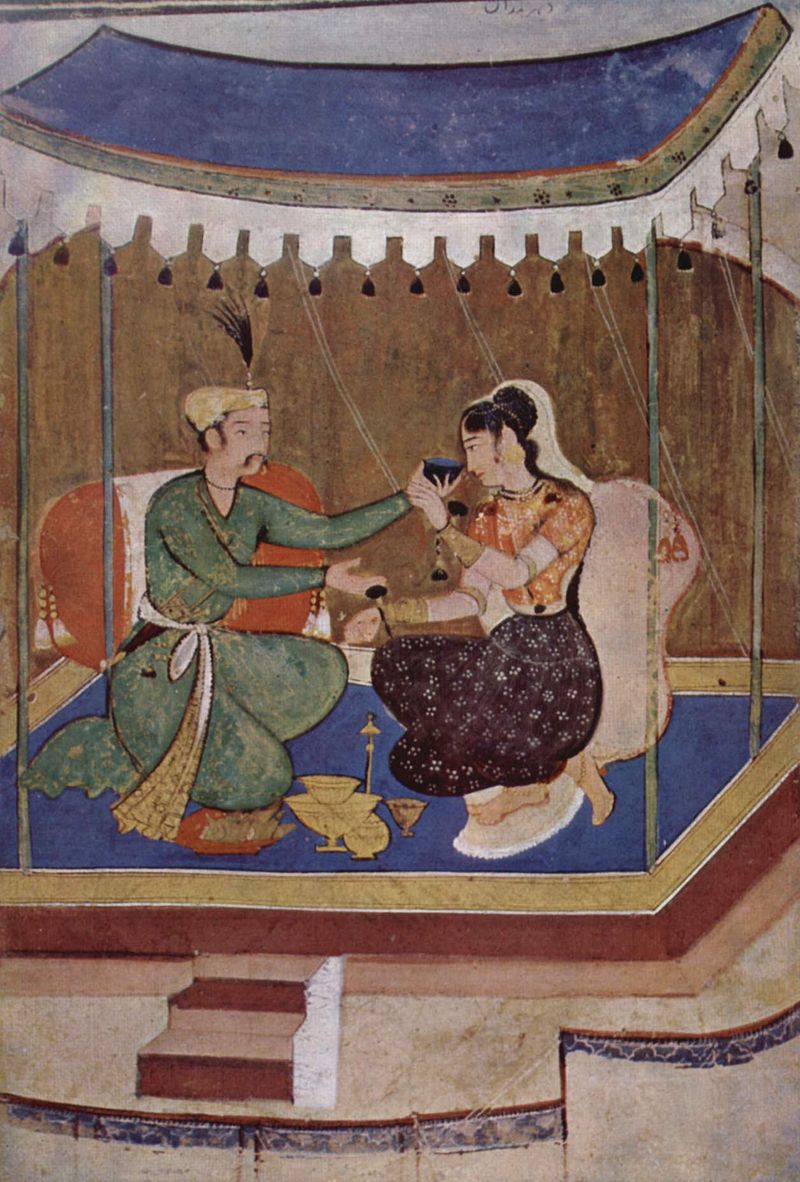 |
Islamic slave-trade
The advent of Islam raised the institution of slavery to an unprecedented scale: slaves became like a normal commodity and slave-trade a normal business enterprise all over the Islamic world. As noted already, Sharia laws place slaves in the category of common property or commodity and specify prices of slaves based on their physical fitness, sexual attraction, and so on. Fatwa-i-Alamgiri specifies regulation of purchase of a female slave on the basis of her having a too large breasts, too wide vagina or being a virgin or not. Traditions of the Prophet and his honourable companions support these regulations.
The origin of Islamic slave-trade: Slave-trade in Islam started with Prophet Muhammad’s selling some of the enslaved Banu Qurayza women to Najd for acquiring weapons and horses. The Prophet and his nascent Muslim community in Medina, dedicating themselves exclusively in the cause of Allah, engaged in raiding and plundering trade-caravans and infidel communities, which also became their means of making a living.
In these campaigns, they frequently captured slaves, mostly the women and children. However, slave-trade was then not a flourishing trade vocation in Arabia. It was also not safe for the nascent Muslim community to sell the enslaved in open markets. In this situation, the Prophet used to demand ransom from captives’ families to earn revenues as an alternative to selling them.
After direct Muslim rule began in Delhi (1206), the power and opportunity for making expeditions against non-Muslim communities in the vast landscape of India greatly increased. The scale of enslavement and yield of slaves naturally increased during subsequent centuries.
Slave-trade in India had become such a prominent trade vocation that some rulers even took the onus of regulating slave-markets by fixing prices. During Sultan Alauddin Khilji, Indian markets were teeming with slaves. He fixed the price for a good-looking girl suitable for concubinage from twenty to thirty and even forty tankhas (ten tankhas = one gold coin), while
male slaves were priced at 100 to 200 tankhas. Handsome boys were to be sold at twenty to forty tankhas, while those in poor demand could be sold at seven to eight tankhas. The price of a child slave was fixed at seventy to eighty tankhas.
Slavery, theologically & historically, an integral part of Islam
Despite widespread denials about the existence of slavery in Islam and the claim that Islam took the first step toward its abolition, slavery is indisputably a divinely sanctioned institution in Islam, which will stand valid until the end of the human race. In Islamic doctrine, slavery is integral in Allah’s eternal plan; it’s a part of His divine grace to humankind. All Schools of Islamic jurisprudence, the Sharia, and the religious doctors of Islam throughout history have unequivocally and proudly accepted and preached slavery as an integral part of Islam.
References:
Islamic Jihad - M. A. Khan
Bernard Lewis, The Political Language of Islam
Irfan Habib, ``The Agrarian System of Mughal India’’
Bernier, ``Travels in the Mughal Empire 1655-1668’’
RC Majumdar, ``History of Medieval Bengal’’
Jadunath Sarkar, ``History of Aurangzib’’ Volume 4
Sita Ram Goel, ``Story of Islamic Imperialism in India’’
Jadunath Sarkar, ``History of Aurangzib’’ Volume 5
RC Majumdar, ``History and Culture of the Indian People’’, Vol. 6 (Delhi Sultanate)
Farah Abidin, ``Kabul Suba during the Mughals’’
Lal, K. S. (1994). Muslim Slave System in Medieval India
Raza, S. Jabir (2010-2011). Hindus Under the Ghaznavids. Proceedings of the Indian History Congress Vol. 71
 Support Us
Support Us
Satyagraha was born from the heart of our land, with an undying aim to unveil the true essence of Bharat. It seeks to illuminate the hidden tales of our valiant freedom fighters and the rich chronicles that haven't yet sung their complete melody in the mainstream.
While platforms like NDTV and 'The Wire' effortlessly garner funds under the banner of safeguarding democracy, we at Satyagraha walk a different path. Our strength and resonance come from you. In this journey to weave a stronger Bharat, every little contribution amplifies our voice. Let's come together, contribute as you can, and champion the true spirit of our nation.
 |  |  |
| ICICI Bank of Satyaagrah | Razorpay Bank of Satyaagrah | PayPal Bank of Satyaagrah - For International Payments |
If all above doesn't work, then try the LINK below:
Please share the article on other platforms
DISCLAIMER: The author is solely responsible for the views expressed in this article. The author carries the responsibility for citing and/or licensing of images utilized within the text. The website also frequently uses non-commercial images for representational purposes only in line with the article. We are not responsible for the authenticity of such images. If some images have a copyright issue, we request the person/entity to contact us at This email address is being protected from spambots. You need JavaScript enabled to view it. and we will take the necessary actions to resolve the issue.

























